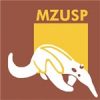The Diptera collection of MZUSP had its origin in the collection of the Museu Paulista’s Zoology Section. This Section was transferred in 1939 to the State’s Office of Agriculture, Industry and Commerce, erected in an independent office under the name of Department of Zoology.
In 1939, the Department of Zoology’s Insecta Division had no Diptera specialist yet. However, this group’s collection was the target of Messias Carrera’s attention, who took to his care the work of reviewing and ordering it. Later, he was hired to work with this collection. Other renowned researchers of Brazilian dipterology, with international recognition, also worked at the Museu de Zoologia and helped to form this important collection, highlighting, in the 40s, Maria Aparecida Vulcano d’Andretta; in the 60s, José Henrique Guimarães and Nelson Papavero; and in the early 70s, Nelson Bernardi and Francisca do Val.
The Diptera collection of MZUSP had its expansion from the mid 60’s and early 70’s, with the acquisition of parts of specialists’ collections, purchase of collector’s material and collections made through expeditions organized by the institution itself. In this way, the collections of Friar Borgmeier (Phoridae) and Mauro Pereira Barretto (Psychodidae and Tabanidae) were incorporated; part of the Nematocera collection of John Lane, excluding the Culicidae, donated by the School of Public Health; specimens bought from collectors such as Fritz Plaumann in Santa Catarina and E. L. Peña in Chile, Paraguay, and Ecuador; specimens from collections held at the Boracéia Biological Station, belonging to MZUSP, and in permanent expeditions to the Amazon (EPA). On the other hand, collections made by MZUSP specialists themselves in their study groups, in addition to the magnificent collections recently incorporated into the assemblage, from expeditions carried out under the “Biota FAPESP – Hymenoptera/Isoptera (Wealth and diversity of Hymenoptera and Isoptera along a latitudinal gradient in the Atlantic Forest – the rain forest of eastern Brazil)” and “SISBIOTA BRAZIL – Thematic network for diversity studies, systematic, distributional limits of Diptera in the states of Mato Grosso, Mato Grosso do Sul, and Rondônia” projects, contributed immensely to increase the assemblage.
